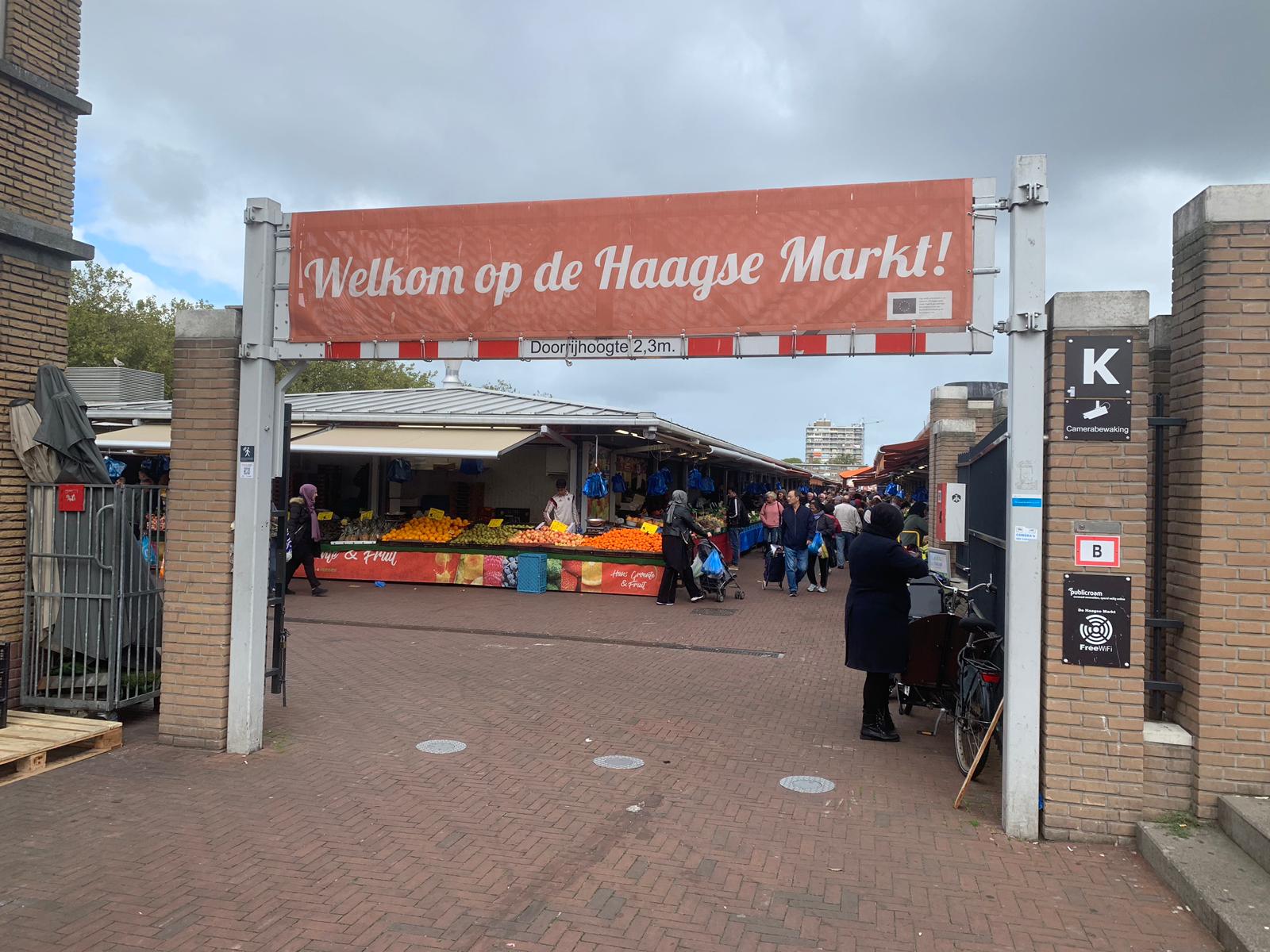Haagse Markt, The Hague. September 18th, 2019. 11.00 am.
As I am walking towards the market, on an almost straight line, the scenery quickly changes. From my calm residential neighborhood, I gradually enter an animated commercial area. I come across more and more people. Many of them are carrying groceries and other shopping bags. We are crossing paths. Traffic gets busier. Buses and trams drop people in hordes. Bikes struggles to pass by that tumult. Eventually, it is when I reach this roundabout, surrounding by shops, local multicultural stores and that well recognizable KFC logo that I know I have arrived at my destination.
“Welkom op de Haagse Markt”
When stepping in the market venue, I remember that I should adopt an “ethnographic eye”. I am not only here to wander. I do not have anything to do other than walking and watching the world around. I do not need groceries, or anything really. And, I did not even bring any cash with me. I am sentenced to ramble – but I must get something out of it. I should notice. Following the crowded flow, I am having trouble to pinpoint any specific behavior or situation.
I should notice. But what am I even supposed to look at? I have been here a few times already. I know my way around. I know the layout of the market. I am starting to recall sellers faces. I am part of that crowd I should be observing. I am used to everything I am seeing, hearing and smelling. How could I objectivize something that seems so banal to me?
I should notice. But how am I even supposed to do so if the atmosphere appears to be so hectic and lively? Too many things are unfolding in front of me. How do I select what I believe is important here?
Okay. Let’s pause for a minute. Let’s focus and look around. Why did I choose this market of all possible sites in the first place? What makes it special? What makes this market different from a supermarket or a corner shop?
Standing still for a few minutes enables me to see more details in that big picture. I realize what I like about this place and why I find it so fascinating. Under that chaotic climate, I start noticing patterns and trends. The market reveals itself to be a very human space. People are talking to each other. Very few people seem to be in a hurry. They are taking their time to check prices, offers and talk to friends and acquaintances along the way.
I have toured the market twice now and I am still recognizing individuals I have seen stepping out of the bus earlier. While I am waiting nearby a fast food stand, on the other side, this woman speaks in Arabic with a vendor with prickly pears in her hands. I understand that she is a regular client and that she is not content with the quality of the produce. Her angry and annoyed tone is enough to understand that part. Later, I see her again at another booth finally buying the fruits she wanted.
The market now appears to me as a sociability space. Vendors are shouting their deals and offers – in Dutch of course. And, it does not bother anyone. I did not even paid attention to them before I allowed myself to be present and mindful of what was happening in front of me. These screams would blend in the background. Indeed, they are totally normal and acceptable here. Why wouldn’t it be elsewhere on the streets or in a store? Passers-by either choose to ignore the shouting or respond by getting closer to the stands. Beyond being a clear appeal to consumption, could they be an invite to interaction?
On my last tour of the market, I stumble across a stall with various fabrics and wax often used to make African pagnes. A couple is buying worth of fifty euros of materials. They are discussing between them in Turkish and answering the vendor in Dutch. As I am also looking around, I hear the him explain, in English, to another potential buyer, that he is from Ghana. “We will come back” “Yes, do so, I am always here!” he replied with a smile.
Photography Credits to NING Yi Boline.


